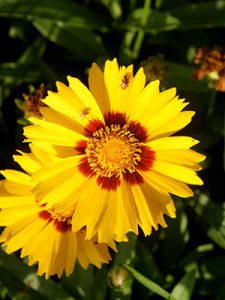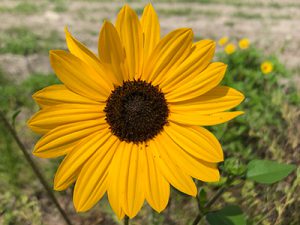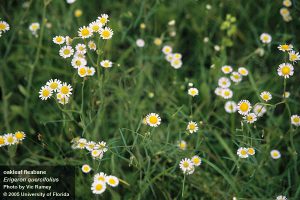Dear King Phillip
Thousands upon thousands of plants exist in the world. To better understand the thousands of plants, we use plant taxonomy to organize and classify different plant groups. You may remember the phrase from high school biology, “Dear King Phillip came over for good soup.” This mnemonic allows us (or me) to remember the varying levels of taxonomic classifications we use in biology. The mnemonic lets us learn about the largest plant family.
The terminology in taxonomy is domain, kingdom, phylum, class, order, family, genus, and species. All living things are classified by this system, with the domain being the broadest and species being the most precise. For example, all living things are classified into three major domains: archaea, bacteria, and eukarya. Within eukarya, we have six kingdoms: fungi, animals, plants, chrmoalveolata, rhizaria, and excavata. Each level of taxonomy is sub-divided into further categories. A Red Maple (Acer rubrum), for instance, is in the plant kingdom, phylum Anthophyta, class Dicotyledonous, order Sapindales, family Sapindaceae, genus “Acer”, and species “rubrum”.
The Largest Plant Family: Asteraceae
Within the “plant world,” we usually describe plants by their family, genus, and species – we skip over most of the other taxonomic classifications. Plant families vary in size. Some plant families have only a few species while others may have thousands. The previous article explored the role of the Solanaceae (Nightshade) family in gardens. Today’s article will explore the largest plant family – the Asteraceae family, better known as the “Daisy Family.”
The daisy family is massive in diversity and the number of species. Within the family, there are 32,000 species divided into approximately 1900 genera. Many notable plants within this family include chrysanthemums, marigolds, zinnias, daisies, lettuce, black-eyed Susan, and sunflower. The majority of Asteraceae plants grow as perennials or annuals, but the most characteristic portion of this plant family is its flowers.
Inflorescence
Imagine a sunflower, specifically its “flower.” You probably imagine its dark blacking/brown center irradiated by bright yellow petals. Like all Asteraceae plants, this is not a flower, rather, it is a collection of flowers we call “inflorescences.” On every aster inflorescence, we see two types of flowers: a disc flower and a ray flower. The disc flower makes up the interior portion of the inflorescence while the ray flower is the exterior of the inflorescence. The florets all have tiny flower petals, but the ray flower has one large petal-like structure we call a ligule. The ligules are the large “petals” we recognize on aster flowers. These ligules exist to attract pollinators to the nutrient-rich disc flowers.

Florida’s Asters
Florida has 440 asters. Of these, 331 are native and 41 are endemic (meaning they only occur here in the world). Every native aster in Florida serves as a valuable food source for wildlife, especially our pollinators. Many of these important asters are commonly considered “weeds,” too. Some of our most common native Asteraceae plants include Coreopsis (Coreopsis spp.), Dune Sunflower (Helianthus debilis), and Elliot’s Aster (Symphyotrichum elliottii). A favorite of mine is beginning to flower right now – the Oakleaf Fleabane (Erigeron quercifolius).



Planting Your Own
Planting asters within your landscape provides amazing ornamental and environmental benefits. With proper planning and selection, you can include nearly year-round colors. So next time you are pulling the ligules off an aster stating, “she/he loves me, he/she loves me not,” or singing Tom Petty’s “Wildflowers,” remember the Asteraceae family, the largest plant family in the world.
More Information
UF/IFAS Extension Nassau County
UF/IFAS Extension Blogs – Taylor Clem
Social Media:
Source: UF/IFAS Pest Alert
Note: All images and contents are the property of UF/IFAS.



